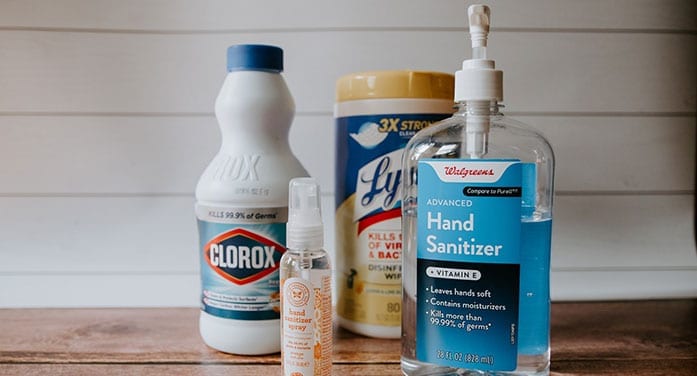Our obsession with killing germs during the COVID-19 pandemic has had an unintended and dangerous consequence, according to the University of Alberta’s Injury Prevention Centre: a sharp increase in unintentional poisonings due to hand sanitizers, disinfectants and household cleaners.
Calls to Alberta’s Poison and Drug Information Service (PADIS) related to these products have increased by 73 per cent since the advent of COVID, according to Kathy Belton, associate director of the Injury Prevention Centre, which is run by the School of Public Health.
“While these products are essential for cleaning and preventing the spread of the virus, when they are used incorrectly they can cause unintentional poisoning and serious injuries,” Belton said.
“When they are left in common areas and within the reach of children, kids can accidentally ingest them or get some in their eyes.”
Calls due to hand sanitizers went up by 200 per cent over 2019 numbers, Belton reported, with an eightfold increase in calls about adolescents between 13 and 19 years old and five times more calls about seniors over 60.
The increase in hand sanitizer exposure calls related to teens is likely due to increased availability in places such as homes, schools, fitness facilities and shopping malls, said Mark Yarema, medical director of PADIS. There is also the possibility that teens may be experimenting with drinking hand sanitizer to get high, he warned.
In some cases, the mistakes were caused by confusing packaging. “Hand sanitizer, in particular, has been packaged in beer cans and wine bottles,” Belton said. “If you think about it, if there’s a beer can with hand sanitizer in it, an unsuspecting inebriated person could mistake it for a real beer.”
The same applies to young children. “Some hand sanitizers can be brightly coloured and have fruit or other foods on the labels, as well as appealing smells that can make them tempting to young children,” said Yarema.
“Fortunately, PADIS has not seen any serious effects or outcomes with these exposures.”
When swallowed, hand sanitizers lower blood sugar, slow heart rate and breathing, and may cause a poisoned child to appear drunk, with an unsteady gait, slurred speech, nausea and vomiting, and drowsiness.
For poisoning with cleaning products, symptoms can vary depending on the product and whether it was swallowed, inhaled, or splashed in the eyes or on the skin. Red watery eyes, mouth pain, drooling, choking, gagging, difficulty breathing, vomiting and stomach pain could all be signs of poisoning.
Unintended poisonings are responsible for more deaths than vehicle collisions in Canada and lead to an increasing number of hospitalizations and emergency room visits each year. Nearly 4,500 Canadians die this way each year, according to the 2020 Evidence Summary on the Prevention of Poisoning in Canada, released by the Injury Prevention Centre last summer.
“The public sees child-resistant lids and other manufacturing solutions for products and they think that the poisoning issue has been solved,” she said. “But it really hasn’t.
“These are toxic chemicals and they should be treated with respect.”



